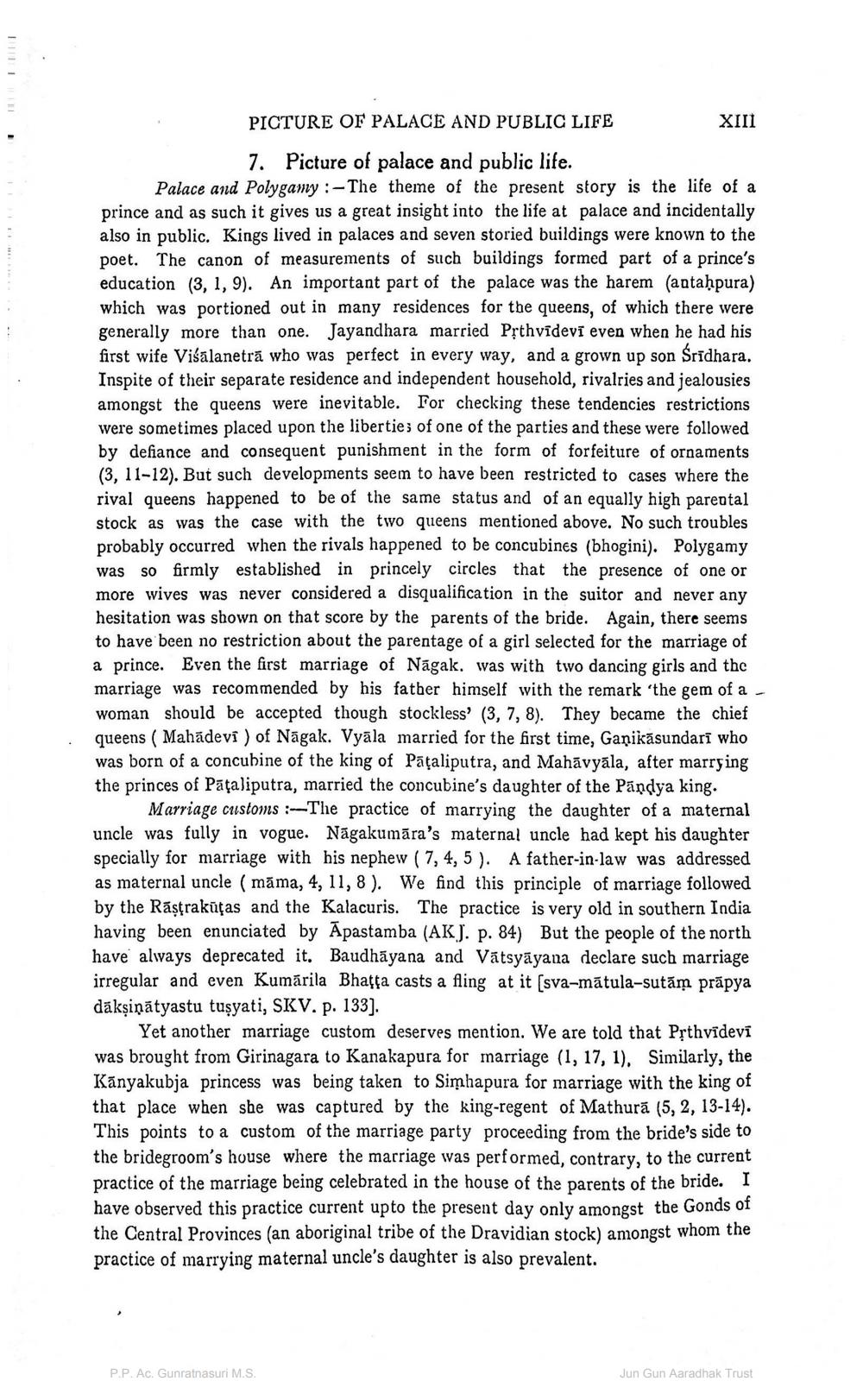________________ PICTURE OF PALACE AND PUBLIC LIFE XIII 7. Picture of palace and public life. Palace and Polygamy :- The theme of the present story is the life of a prince and as such it gives us a great insight into the life at palace and incidentally also in public. Kings lived in palaces and seven storied buildings were known to the poet. The canon of measurements of such buildings formed part of a prince's education (3, 1, 9). An important part of the palace was the harem (antahpura) which was portioned out in many residences for the queens, of which there were generally more than one. Jayandhara married Psthvidevi even when he had his first wife Visalanetra who was perfect in every way, and a grown up son Sridhara. Inspite of their separate residence and independent household, rivalries and jealousies amongst the queens were inevitable. For checking these tendencies restrictions were sometimes placed upon the liberties of one of the parties and these were followed by defiance and consequent punishment in the form of forfeiture of ornaments (3, 11-12). But such developments seem to have been restricted to cases where the rival queens happened to be of the same status and of an equally high parental stock as was the case with the two queens mentioned above. No such troubles probably occurred when the rivals happened to be concubines (bhogini). Polygamy was so firmly established in princely circles that the presence of one or more wives was never considered a disqualification in the suitor and never any hesitation was shown on that score by the parents of the bride. Again, there seems to have been no restriction about the parentage of a girl selected for the marriage of a prince. Even the first marriage of Nagak. was with two dancing girls and the marriage was recommended by his father himself with the remark 'the gem of a - woman should be accepted though stockless' (3, 7, 8). They became the chief queens ( Mahadevi ) of Nagak. Vyala married for the first time, Ganikasundari who was born of a concubine of the king of Pacaliputra, and Mahavyala, after marrying the princes of Pataliputra, married the concubine's daughter of the Pandya king. Marriage customs :--The practice of marrying the daughter of a maternal uncle was fully in vogue. Nagakumara's maternal uncle had kept his daughter specially for marriage with his nephew ( 7, 4, 5). A father-in-law was addressed as maternal uncle (mama, 4, 11, 8). We find this principle of marriage followed by the Rastrakutas and the Kalacuris. The practice is very old in southern India having been enunciated by Apastamba (AK). p. 84) But the people of the north have always deprecated it. Baudhayana and Vatsyayana declare such marriage irregular and even Kumarila Bhatta casts a fling at it (sva-matula-sutam prapya daksinatyastu tusyati, SKV. p. 133]. Yet another marriage custom deserves mention. We are told that Prthvidevi was brought from Girinagara to Kanakapura for marriage (1, 17, 1). Similarly, the Kanyakubja princess was being taken to Simhapura for marriage with the king of that place when she was captured by the king-regent of Mathura (5,2, 13-14). This points to a custom of the marriage party proceeding from the bride's side to the bridegroom's house where the marriage was performed, contrary, to the current practice of the marriage being celebrated in the house of the parents of the bride. I have observed this practice current upto the present day only amongst the Gonds of the Central Provinces (an aboriginal tribe of the Dravidian stock) amongst whom the practice of marrying maternal uncle's daughter is also prevalent. P.P.AC. Gunratnasuri M.S. Jun Gun Aaradhak Trust




